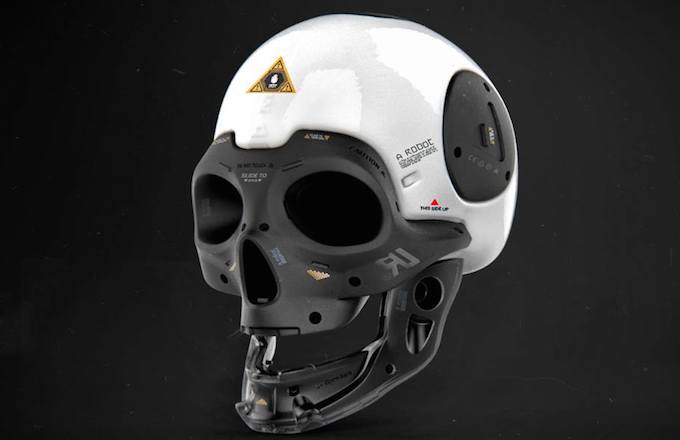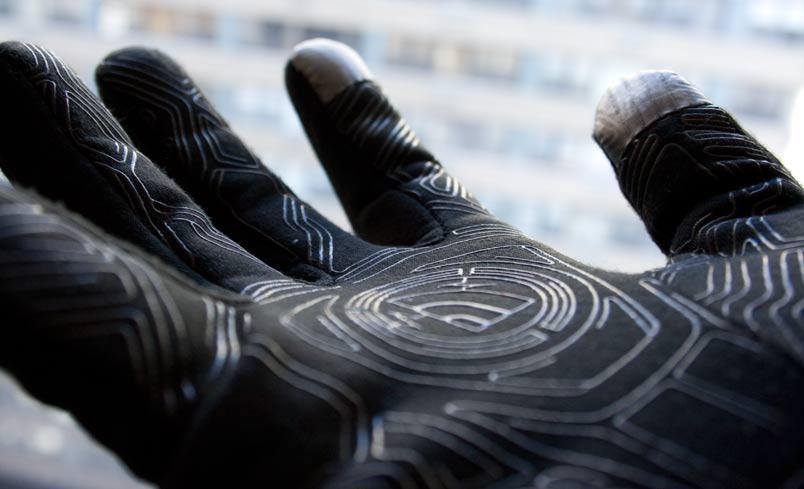
Wear It Out NYC
Fashion from the Streets of New York City Through the eyes of Mike Luster, Graduate Student at FIT.
Wednesday, February 18, 2015
Monday, September 15, 2014
These Are Days...
As the dog days of summer come to an end, I wanted to share some very candid shots I took on the street last week in SOHO. Many of these were taken just outside the CFDA offices where I went that morning for an interview for a volunteer position at Mercedes-Benz Fashion Week. It was an amazing experience and I am happy to report that I was selected; one of 160 out of 1,300 who applied. I am so grateful! Fashion Week is right around the corner and while I will not be able to blog specifically about the event or the shows at which I am working, I will recap in general terms what the experience was like and provide information for others who might be interested in applying for one of the coveted spots in February 2015.
It is cooling off in the city - I am actually wearing a cardigan today - so I will be excited to see what fall fashion brings to the streets of NYC. I expect to see lots of paisley, dropped shoulders and reportedly some experimental head and face gear. I'm be here, reporting live from the street of NYC the style that only New Yorkers can make their own. --ML
Thursday, September 11, 2014
The Creative Class | Kim Hastreiter, Editor and Publisher
The Creative Class | Kim Hastreiter, Editor and Publisher
From Fasionista.com BY SULEMAN ANAYA 10 SEPTEMBER, 2014
Too hip to be called a doyenne, Paper magazine’s iconic, bespectacled co-founder and co-editor-in-chief presides over New York’s art and fashion scene with the friendly, match-making powers of a punk aunt that has seen the future. BoF traces a three-decade career that straddles analog and digital, high and low, style and culture, with unusual ease.
 Kim Hastreiter | Photo: Kevin Trageser for BoF
Kim Hastreiter | Photo: Kevin Trageser for BoF
NEW YORK, United States — In the early 1980s, when Vivienne Westwood wanted to collaborate with Keith Haring, whom she did not know personally, she called Kim Hastreiter. Hastreiter, then the newly-appointed fashion editor at the Soho News and a popular girl-about-town, knew Haring well.
Within weeks, Westwood and Haring were working together on a series of fabrics and knits that featured the artist’s trademark graffiti-inspired prints and now form part of the Metropolitan Museum’s permanent collection. Fashion history had been made, thanks to two phone calls to and from one pivotal intermediary sitting at a desk on Spring Street.
“As an editor, you have to be able to get rid of everything mediocre, nothing mediocre can even be in your presence. And then you have to find the best. Kill, kill, kill, kill — ‘This is the best.’”
It is a telling true story about someone who herself says she is a real-deal ‘connector,’ referring to the type of individual Malcolm Gladwell describes in his book The Tipping Point as being uniquely positioned to make interesting things happen, thanks to a large social network and to a rare “ability to span many different worlds… a function of something intrinsic to [his or her] personality, some combination of curiosity, self-confidence, sociability and energy.”
A comparison that would seem presumptuous coming from almost anyone else is downright humble coming from Hastreiter. As the co-founder of New York style and pop culture magazine Paper, which last night celebrated its 30th anniversary with an all-out party featuring a live performance by Brooke Candy, Hastreiter has been a fixture of New York’s art and fashion scene since the 1970s. But her reputation stems mostly from her uncanny skill as a catalyst for the artistic and the outré, someone who facilitates the kind of encounters between creative people that produce synergistic sparks, memorable cultural output and, along the way, dollars. (This last point hasn’t been lost on marketers, who have long sought Hastreiter’s counsel to reach coveted demographics).
If, growing up in New Jersey, the smart Hastreiter seemed predestined to end up in the big city across the river, she never envisioned one day starting and running a seminal publication representative of the city’s storied subculture. Hastreiter wanted to make art and, after a stint at a Canadian art school, went on to study with renowned conceptual artist John Baldessari at CalArts near Los Angeles.
After coming to New York in 1976, she got a sales job at a hip clothing store uptown (part-owned by the designer Betsey Johnson) and before too long had “slipped into this amazing scene that was going on in New York. I would stay up all night, going to the Mudd Club and meeting all these people making movies, music and fashion. I was just burning on both ends.”
Indeed, Hastreiter was lucky to witness a magical and now legendary moment in the history of New York nightlife, notable for its explosive and cross-disciplinary cultural energy. “I saw this whole world of music and art and fashion colliding together. Stephen Sprouse was making clothes for Debbie Harry and Debbie Harry was making music with Fab Five Freddy, hip hop was starting in the South Bronx, and you would see these insane looks everywhere.”
Hastreiter had already fallen in love with fashion on a personal level. But her entry to the industry and the world of publishing came in 1979 when her friend Bill Cunningham, who frequently photographed Hastreiter in her outrageous, artfully assembled outfits, recommended her for a job at the downtown paper Soho News. “I decided to put making art on hold and explore this new world that seemed more creative than anything I had ever seen.”
At Soho News, Hastreiter was in charge of the fashion pages, for which she had to produce weekly stories featuring the latest runway looks. Hastreiter, however, approached the task through the lens of culture. “It wasn’t fashion. It was fashion as seen from an art perspective,” she says. Just as importantly, she opened the publication’s doors to her art world friends.
Facilitating collaborations and producing magazine stories that straddled the pop, street, art and fashion worlds, Hastreiter knew she had found her calling. “Robert Mapplethorpe shot fashion for me, Keith [Haring] and his crew were modelling for me. I got to do all these crazy art pieces in the name of fashion. It was incredibly exciting and I realised this is what I wanted to do.”
When Soho News went out of business in 1982, Hastreiter and her friend and colleague David Hershkovits, along with Richard Weigand and Lucy Sisman, decided to launch a publication of their own. “Downtown [New York] was becoming a really amazing place, we felt it needed a publication.” Funding was a problem, however, and it wasn’t until 1984 that the first issue of Paper finally came out, produced on a shoestring budget.
As for the publication’s simple, sharp title and design, Hastreiter explains, “After all of the horrible over-decorated design of the 1970s, Agnes B’s first store in New York blew my mind. [The name Paper] struck me as truly modern, just how I wanted the magazine to be. I wanted it to look as plain as a glass of water.” Paper’s first issue was a generic-looking poster-sized,16-page fold-out, printed in black-and-white newsprint.
From its onset, the magazine promoted the most interesting and undiscovered creative people, places and happenings, from stores to club nights to designers. What set the fledgling publication apart was its early focus on a certain energy or attitude, rather than a specific subject. “In those days, style became a super-important umbrella that everything came under. Style became part of our culture; culture became embedded with style. Especially downtown, which was more underground, it was not just about what you were wearing, but where you were going out.”
Unlike some of the achingly edgy style bibles that emerged in London in the coming years, Paper was cool by virtue of how inclusive, excitable and homespun its pages could be, embracing a friendly, diverse family of real artistic freaks rather than an ice-cold projection of unattainable insouciance. According to editorial director Mickey Boardman, Paper was a fanzine from the day it launched. “It has always had the energy of a fanzine and that kernel still holds true. We are not critics and we will never write about anything we think is terrible. It’s essentially an avant-garde mom-and-pop operation that has gotten much slicker and more business-savvy with time.”
Paper’s unpretentious stance, which itself reflected the punk sensibility of its founders, lent the magazine instant and enduring credibility. The publication also became known for championing outsiders and underdogs. “Sometimes the most amazingly talented people are not able to advocate for themselves, so I have to enable them, either by giving them respect on the pages or by connecting them with people who could help them.”
None of this would matter were it not for Hastreiter’s gift for discerning the most promising talent. Hastreiter recalls being influenced by a college friend who advocated avoiding mediocrity at all cost. “He said ‘Everything in your life has to be the best. Whether it’s stuff or people.’” Hastreiter took the advice to heart, which now informs everything from the soap she uses to the pencils on her desk.
“What Paper had from the beginning is that I can tell good from bad. I am great at finding the best, in any context. I am a really good shopper, I can find the best pair of shoes. I am a really good editor, I can pick the best photograph from a shoot in a second. That is just my talent, I know how to pick the best.”
It’s an ideal skill for an editor, which is by definition a job of elimination. “As an editor, you have to be able to get rid of everything mediocre, nothing mediocre can even be in your presence. And then you have to find the best. Kill, kill, kill, kill — ‘This is the best,’” Hastreiter says, adding: “My job is really about quality. I can see a fashion show and right away know when I see great designer.”
Hastreiter’s longevity in a fickle industry stems from the fact that she relies only on her own detectors to filter hype from what is actually noteworthy. “I don’t read the press, I never listen to what other people say. I have to do my own homework.” And seemingly immune to the whims of the fashion system, where something can be celebrated only to be forgotten overnight, once Hastreiter believes in something — a designer, an artist — her support is steady. “When someone is brilliant, they are not going to suddenly become unbrilliant. I hate that about the fashion world. Real amazingness doesn’t just go away.”
Delegating is another key element of Hastreiter’s job. “The other part of being a good editor is to know what you don’t know. For instance, I am not going to write about some skater subculture in Hawaii. But I am really good at finding the people that are perfect to work on that story. It’s like I have a built-in sense of smell. I am a truffle hunter, I smell for truffles.”
Ideally, once Hastreiter has found talent she trusts, her approach is hands-off. “You find great people, and then you leave it for them to do. You don’t meddle. I am at my worst when I don’t have the confidence in the people that are executing. Then I can really torture people. But if I think they are brilliant, I don’t even touch it.”
Thirteen years ago, Paper launched its marketing arm Extra Extra. “Before the word even existed, we realised that all our our friends were ‘influencers,’ people who can make things happen — exactly the types of people businesses want to reach. So we started a second company and as the magazine landscape was changing thanks to the Internet, it has really helped our business model.”
Today, Hastreiter is thinking about her legacy and her vision for the future of the magazine she started is refreshingly pragmatic. “I don’t plan to be here in 30 years.” An avid cook, she uses a cooking analogy to elucidate how her role has shifted. “I still have stuff to say, but I am now the taster rather than the chef, making sure there’s balance, not too much mainstream in the mix.” To steer the magazine into a future that is more global and digital, Hastreiter has anointed a successor: chief creative officer Drew Elliot, who started out at Paper as an intern and is one of Hastreiter’s ‘truffles.’
“Drew has a vision that I could never have. And we have had to reinvent Paper, re-imagine what the magazine is. A magazine no longer can tell you what is going on, because you already know that from other sources. Paper has to be something else now, it has to be something more visual, emotional and conceptual, a beautiful object. That is what we are doing, all in keeping Paper’s DNA intact.”
With an eye on the next generation of talent she knows the magazine will need, Hastreiter advises, “You have to be open and know yourself. Ask yourself, ‘What can I do better than others?’ Then concentrate on that and you will succeed. You have to always put your best you forward.”
“No matter what people say about internships these days, I strongly suggest you get an internship at the place you dream of working at. Go and work for someone you admire and work for free, work really hard and you might end up getting a job there.”
Editor’s Note: This article was revised on 11 September, 2014. An earlier version of this article failed to mention the roles played by Richard Weigand and Lucy Sisman in the inception of Paper magazine.
Saturday, September 6, 2014
BILL CUNNINGHAM THINKS THE FASHION INDUSTRY IS DUE FOR A MAJOR CHANGE
While Bill Cunningham may be notoriously private — he hates the 2010 documentary about him because now he gets approached by people on the street while trying to do his job — he was anything but shy about expressing his opinions on the state of the fashion industry when he sat down with Fern Mallis for her "Fashion Icons" series at 92Y.
"I think the fashion world needs to come to grips with reality," the photog said, tearing up a little bit. "The reality is you have the whole country electronically connected. They’re educating the insides of their heads, as they should, and not [dressing] the outside with a fancy hat or a dress. Simple clothes, that's key, and I think that's what the fashion world should really think about."
Despite not having a phone himself, Cunningham is surprisingly attuned to the tech world, from which he says the fashion industry could take a lesson or two. "Look at the lines waiting to get into that Apple store on 5th Avenue!" he explained. "Do you see a line waiting to get into Bergdorfs or Saks? The future belongs to this generation and the high-tech world is it!"

"People should take very seriously the fact that you're being invited to view the work of artists," he said of attending fashion shows. "Think about what they're showing, look at the clothes, look at what they do for the body, that's the thing to go and study. You think I'm going there to discuss someone's sex life?"
A former fashion editor of the New York Times, Virginia Pope, made it a rule to attend the first fashion show of any new designer, and attended Cunningham's first fashion show when he had his hat business. It's a rule Cunningham tries to follow himself today, but he believes that the fashion calendar has become too crowded. "Now, there's so many new designers, take a look at this coming week," he said. "There's three different shows every hour on the hour, all in different locations. In one day, I counted seven shows in the same hour!"
Before Mallis could ask questions submitted by the audience, Cunningham mentioned he wanted to talk about the greatest fashion show he had ever seen: the 1973Battle of Versailles. He discussed the show in moving detail for over ten minutes, becoming so emotional that he choked up describing the final look worn by Bethann Hardison.
"That's what American fashion does best!" he finished. "Not imitate, but the simplicity, the honesty of clothes — that's what we've got to get back! That's what made America great, and what made the fashion world great."
Saturday, August 30, 2014
STYLE Interview: Is Health Goth the New Street Goth?
BY TIM NEUGEBAUER

London is full of guys dressing in monochrome sportswear, mixing basic Slazenger pieces off the racks at SportsDirect, with D.TT.K sweats, clear shell Cottweiler track pants, all black Nike Air Max Plus, and an addiction to 3M™ reflective. A lot of these guys are followers of the Health GothFacebook page, established back in April 2013 by Mike Grabarek and Jeremy Scott of the Portland based, alternative R’n’B duo, Magic Fades. Browsing their page, it's obvious there is more to this style than a shared taste in murdered out, or alternatively Colgatewhite sportswear. As an aesthetic it clearly owes a debt to street goth, but focuses on performance sportswear, bionic body parts, the hyperreal digital imagery seen in adverts and Net art, combat gear, and because being out of shape isn't futuristic, a dedication to athleticism. Today the Health Goth page is followed by more than 3,600 people. We caught up with the guys—they want the interview credited to Health Goth—to try and make sense of an internet meme that's become a bona fide London streetwear trend.
Interview by Tim Neugebauer
What does health goth mean to you, and who is the dedicated health goth?
It may be impossible to be a true HG individual, because so much of the style is based on the combination of the setting and the subject, which a lot of times is in a hyperreality that only exists in ads, art installations, and rendered environments.
When I’m searching for images and ideas, a few keywords I might use are mesh, moisture-wicking fabrics,BioWare, body enhancement tech, prosthetics, shoe dipping, various fashion and performance wear brands, transparent clothing, chains and light weaponry, tactical gear, elementalaesthetics, corporal mortification, and rendered environments. There are now five of us posting on the page and deliberating over images, so the idea has broadened out quite a bit, but the main thing was attributing a name to describe a feeling that already existed.

Would you consider yourself part of this community or fans of it?
Both. We definitely subscribe to the style in certain ways, and we are huge fans of certain artists and designers. We've definitely made friends with fans as a result. As for the community aspect, there have been times that health goth has been wildly misconstrued, or deliberately misrepresented. Not that we're control freaks about the way people interpret it, but we will at times point people in the "right" direction, even if it is constantly evolving. We love when people send us images, but we don’t just post anything, or automatically sanction media that is tagged “health goth.”
We’re going to keep trying to add to the world that we’re creating, and not let things stagnate, we have a shitload of images in our queue, but we only post a fraction of what we find. We love the fans pointing us at images they think are health goth, and if we agree, we will then post.

Is the goth part of health goth a colour thing or a mindset thing?
When I thought of the name, I was sort of making fun of the whole street goth thing. The more I thought and talked with friends about it, the more I realized that joking about dipping a perfectly fresh pair of Nike TNs in a swimming pool and being draped in black mesh was actually cool.
It’s not just the colour scheme, a lot of the stuff we post are just futuristic or healthy takes on goth style. For instance, instead of military boots, we post Nike ACG boots that are all black and really advanced looking.

Does Health Goth exist outside of fashion?
No, fashion is a huge part of it. A lot of our influence comes from Cottweiler,Whatever 21, and A D Y N, but we find equal inspiration in our Tumblr feed, where you see a lot of 3D rendered images, which have no people or clothing shown. Images of mesh, or a blade with a tribal pattern and a fern or something. It might not be evident upon looking at our page but a lot of our imagery is very Net art inspired.
When and how did you first encounter health goth? Online or on the streets?
It was online at first, but I remember over a year ago being at various clubs in downtown Portland, notably at theClub Chemtrail parties, and seeing people dressed extremely health goth. So, there is actually a scene of people here who dress like this, and that has inspired us a lot.

You say you're fans of Gravity Boys crew member, Bladee. Does health goth have a soundtrack?
Way more important than the music are the images. When subcultures were birthed before, like emo, for instance, networks for people to share images like Tumblr didn't exist, the scenes came together through burning mp3’s from Limewire or wherever. Now, for the first time, you can spawn a subculture overnight based entirely on visual aesthetics, you don’t need music to define a subculture anymore. Still, there is a type of music that can be associated with health goth. I have this idea that the sound is a combination of epic collage and industrial cinematic sound design. We’ve talked about trying to make a health goth mixtape, that represents the types of sounds we associate with the style. We’ve posted tracks fromM.E.S.H., Drippin’, DJ New Jersey Drone, Egytrixx, Total Freedom, and gotten a positive reaction. But we aren’t trying to curate a new subculture, we just want to post the content we feel.

Is health goth angsty?
One of our most popular pics was an image of a pair of adidas sandals floating in clean tropical looking water. I think if anything, instead of being all about teenage angst, we are trying to exude a feeling of being suspended in an ever changing internet environment, just trying to remain chill and comfortable at a time when a lot of horrible shit is happening on and offline.
Images from the Health Goth Facebook page
Wednesday, August 27, 2014
Op-Ed: US Congress Fails to Renew Vital Trade Deals, AGOA at Risk
African leaders and Heads of State recently visited Washington, D.C. to re-affirm that the United States is focused on doing business with Africa.
Posted on August 25, 2014 by Rick Helfenbein, The Sourcing Journal.
However, in spite of the seemingly productive meetings, unless the African Growth and Opportunity Act (AGOA) is renewed by this Congress in the next few months, it’s safe to say, that our trade effort will be a lame duck. Long-term investments in plant, property, and equipment that are subject to time constraints are effective suicide missions.
AGOA expires in 2015, and an immediate assurance of continuance needs to be made now. Essentially, without a quick renewal, there is no future. It’s not that the U.S. doesn’t want to contribute to the development of the African market, it’s just that we can’t get our act together, and Congress is to blame.
Let’s face it – with regard to passing trade legislation, the 113th Congress is a trade failure.
We are in mid-August, baseball is in its home stretch, and the 113th Congress of the United States of America is on holiday, following their slow and painful death march to a vacation after months of doing nothing.
Congress has not shown any improvement on issues related to international trade. They have not passed any new trade legislation, they have not renewed existing trade bills that required only rollover, and by failing to act, they are aiding and abetting a declining U.S. Gross Domestic Product, and average Americans are asking – can we trust this Congress with the business of America?
It’s hard to imagine what Congress is thinking, and how they can possibly go into recess when they have done so little to improve our nation’s woes. History and pop culture remind us of what happens when you take your eye off the ball and leave business unfinished. Simon and Garfunkel said it so well, “Where have you gone Joe DiMaggio, a nation turns its lonely eyes to you. What’s that you say, Joltin’ Joe has left and gone away.”
Trust in Congress is much the same as Trust in our U.S. currency. So much so that we proudly display our national motto on every bill and coin that says, “In God We Trust.” As we presuppose a supreme being, the key word that creates value for our currency is our unbridled trust in the U.S. Government.
So, if we trust our currency, can we trust this Congress with matters of trade? Unfortunately, 80 percent of this Congressional session is already completed, and the answer is no.
The tale of the tape on renewal items that this Congress has ignored is as follows:
In 2007, we failed to rollover (and still haven’t renewed) the Trade Promotion Authority (TPA). This bill grants the President the ability to fast-track trade legislation, and is critical to the establishment of international trade deals.
In 2012, Congress failed to renew the Miscellaneous Tariff Bill (MTB). Some in Congress call this bill an earmark, not realizing that MTB’s offer a tax incentive for component parts shipped to American manufacturing, and that these parts are not available in the U.S.
In 2013, Congress failed to renew the Generalized System of Preferences (GSP), an honorable legislative agenda that has been in existence since 1974, allowing the U.S. to provide jobs to Third World economies, in return for duty free access on products used as raw component parts for American manufacturing.
In 2014, Congress will likely not renew the Nicaraguan tariff preference level (NIC-TPL) causing pain and suffering to U.S. companies that have invested in Nicaragua because of that very specific trade program.
In 2014 or 2015, Congress must deal with the renewal of AGOA, which is heralded as one of the great steps for the U.S. to help develop Africa as a market. Given all of the prior failures to renew, should companies now invest in Africa when no one knows what Congress will do?
Where is the trust? How can the trade investment community deal with a Congress that is seemingly incapable of renewing the very programs that they encourage us to invest in? How can they ask investors to go to Nicaragua to build factories, and then take the TPL incentive away? How can they ask us to invest in “developing” economies to provide stability, and then take the GSP incentive away? How can they ask us to invest in Africa today, when they can’t convince us that they will renew AGOA tomorrow? We need an adult in the room. We need someone who understands the absolute havoc that these ongoing non-renewals are causing, to the total despair of our international investors and our domestic economy.
Much like an individual who can’t talk without moving their hands, our economy can’t grow without an aggressive trade policy. This is fact, not fiction. Our Congress can’t even help us to achieve the U.S. 66-year average of 3.22% real GDP growth when we have been hovering below 3 percent for the last four years!
Could it be possible that all this non-action on trade was pre-planned?
In Bob Schieffer’s CBS show “Face the Nation” one year ago, Speaker Boehner said of Congress, “We should not be judged on how many laws we create. We ought to be judged on how many laws we repeal.” For Speaker Boehner, this was either fortune telling or laying out an agenda that clearly was achievable.
At least in the mid-90s there was an attempt for Congress to have a “Contract with America.” Today, we are running without a contract and the results are disastrous. This is also quite similar to what happens when a ship’s captain tries to navigate without a compass. Sooner or later, we all end up on the rocks.
Congress needs to get on the right path, and it’s not that some in Congress don’t care; it’s just that consensus needs to be reached; so that we can all move forward together.
If we can put a trust motto on a dollar bill, we ought to be able to hang it on the walls of Congress. Let’s hope for better results in the 114th Congress–it’s time to give up on the 113th.
Rick Helfenbein is Chairman of the Board of the American Apparel and Footwear Association. He is a fierce advocate for a robust USA Trade Agenda and speaks frequently on the subjects of supply chain and international trade.
Subscribe to:
Comments (Atom)





